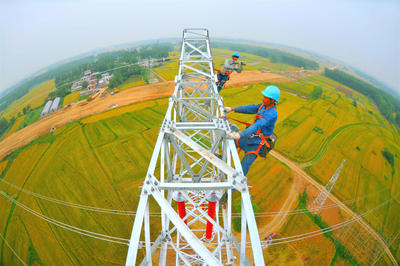Low fertility has caused China’s population age structure to change dramatically over time and the absolute number of people of working age, between the ages of 15 and 59, began to decrease in 2010. This age group is projected to shrink by 29.3 million between 2010 and 2020, with a commensurate decline in labour supply.
Meanwhile, economic growth in excess of 7–8 per cent continues to generate a strong demand for labour. As leading Chinese demographer-economist, Cai Fang, reports, between 2001 and 2011, ‘total urban employment (urban resident employees plus migrant workers) increased by 115 million. Even if this number is cut in half in the next decade, it will still be much higher than the new supply of labour constrained by the decline in the working age population. In the future as in the past, it will be rural-to-urban migrants — not new local entrants to the labour force — who will meet the demand for labour caused by economic growth’.
The shrinkage of labour supply, in the face of increasing labour demand, has induced a widespread shortage of labour and rapid growth in Chinese wages. This is the famous ‘turning point’ in development where unlimited supply of labour dries up and the structure of economic growth has to change profoundly if growth success is to continue. It is also a point after which the pace of economic growth can be expected to slow somewhat.
Hence China’s potential rate of economic growth has steadily been adjusted downwards under successive economic plans: from 9.8 per cent in 1995–2009, to 7.2 per cent in 2011–15 (under the Twelfth Five-Year Plan), and, it is expected, 6.1 per cent in 2016–20 (under the Thirteenth Five-Year Plan). Labour migration from agriculture to industry and the service sectors has improved efficiency in the reallocation of resources, a significant source of productivity growth. But after the ‘turning point’ at the middle of the last decade, access to new labour supply became more limited, the return on capital will begin to diminish, and the improvement of productivity will slow down. The forces driving exceptionally high growth are therefore slowing down.
In this week’s lead essay, Yiping Huang observes that officials are still exceptionally nervous about the inevitable slowing of Chinese economic growth. In recent quarters the indications are that growth has in fact slipped below the official yearly target rate of 7.5 per cent, inducing measures aimed at stimulating growth towards its target rate.
All the signs are towards a softening of China’s growth in the near term. Export growth is likely to be very modest, because the US economic recovery has been weaker than expected and the Chinese export sector is undergoing major restructuring due to a rapidly rising cost base. The upward trend in consumption will continue as rapid wage growth lifts household income, but public consumption may remain slow as a result of the government’s anti-corruption drive. ‘The central government may increase infrastructure investment if the economy weakens again’, Huang argues, ‘but there is little room for local government action in this area because of a decline in revenue from land sales and the tightening in financing conditions for local government investment vehicles’. The central government started to experiment recently, allowing ten provincial governments to issue local government bonds in an attempt to dig them out from the mess they are in because of weakening real estate markets.
Huang points out that the urge to boost growth beyond its real potential is based on a false understanding of the risks of lower growth for higher unemployment. ‘The greatest fiction in policy discussion today is the need for 12 million new urban jobs every year’, he says. ‘This is exactly the same number that was given 16 years ago when the government first proposed the need to maintain an 8 per cent growth rate. At that time, the labour force was rising by 8 million a year. Now it is falling by 3 million a year’.
As officials and economists worry about the impact of the growth slowdown on employment in China, labour supply is actually drying up, with wages continuing to rise rapidly. The impact of slower growth on financial stability, however, is more difficult to assess.
Acceleration in the pace of implementing wide-ranging economic reforms is therefore critical to China’s transition through its turning point. Reducing administrative controls, liberalising the financial system and reforming factor price markets are likely to be the easy bits. More difficult and problematic will be tackling land reform and restructuring state-owned enterprises.
China’s reform agenda will lift the country’s GDP growth potential by improving resource allocation and supporting productivity gains. But, Huang warns, growth will likely weaken further before it picks up.
Peter Drysdale is Editor of the East Asia Forum.

